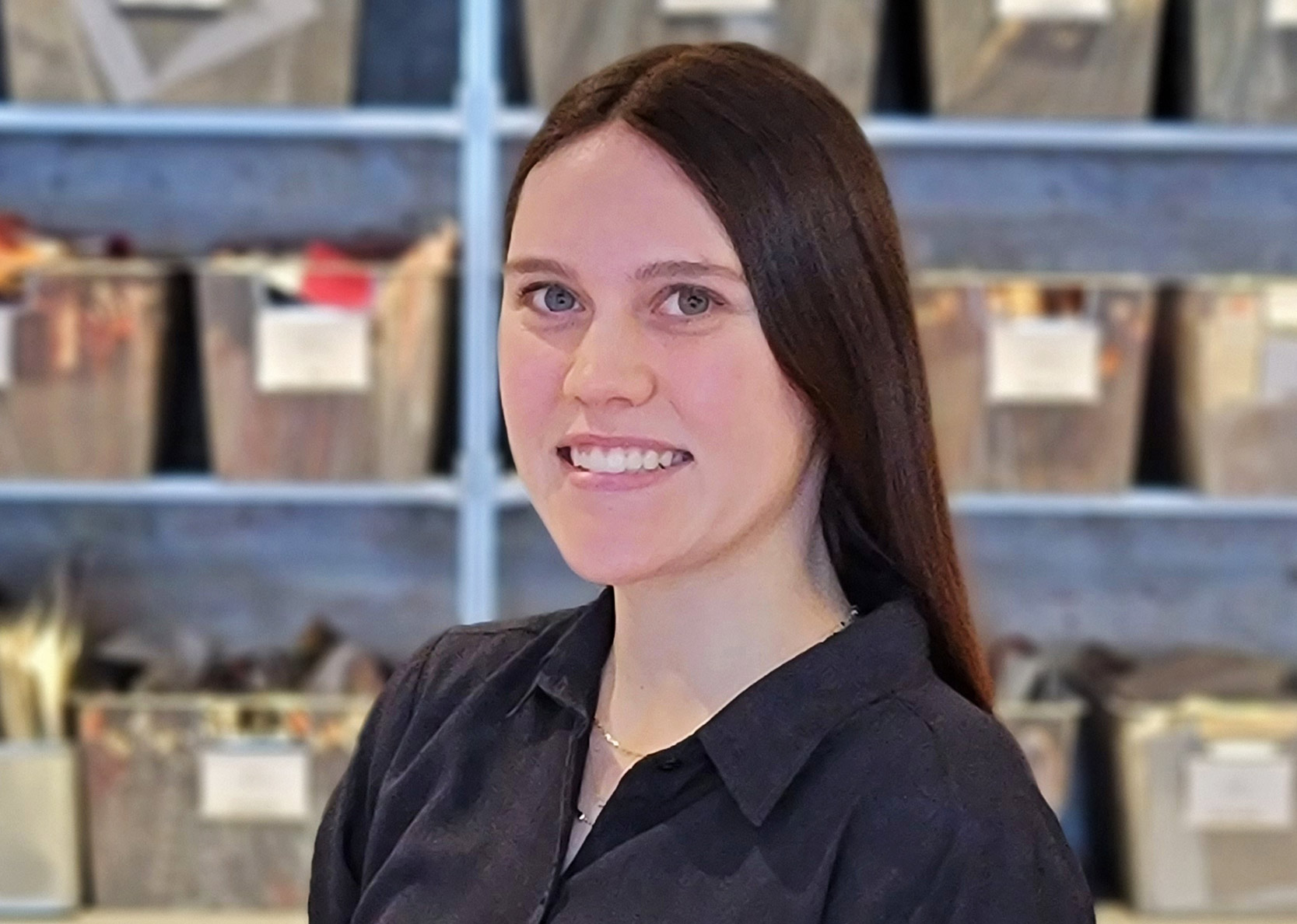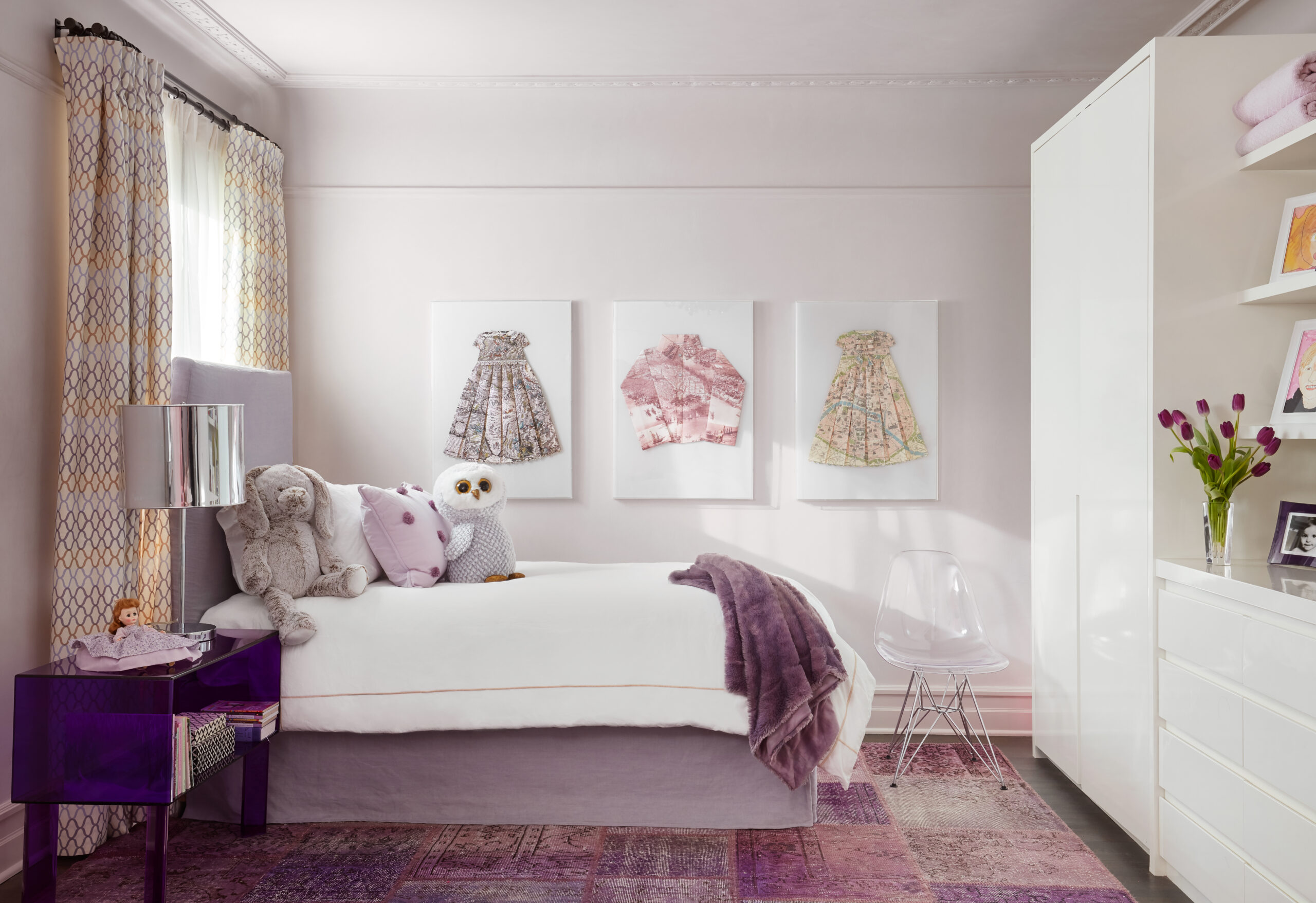
Designing for Kids
We love the challenge of designing spaces for children. Our youngest clients are not afterthoughts; in fact, taking their often-whimsical ideas and translating them into beautiful, functional spaces is one of our favorite parts of the design process. Whether for teenagers who reside in an airy Florida beach house, or for younger kids who ride Razor scooters through the rooms of their luxurious Chicago high-rise apartment, our attention to detail is as keenly focused on rooms dedicated to kids as to those used primarily by their parents.
The key, we’ve learned, is finding out what the child likes—and what they are like. “You don’t have to have a kid’s bedroom straight from the Land of Nod,” says Shea. We find out their favorite artist or sport and how they want to use the room, then create a style that projects the child’s personality. This could mean something as subtle as installing green curtains and light fixtures to honor a favorite color, or as all-encompassing as turning a space into a ballet studio or a garage into a tricked-out game room. In all cases, the durability and cleanability of materials are important to consider.
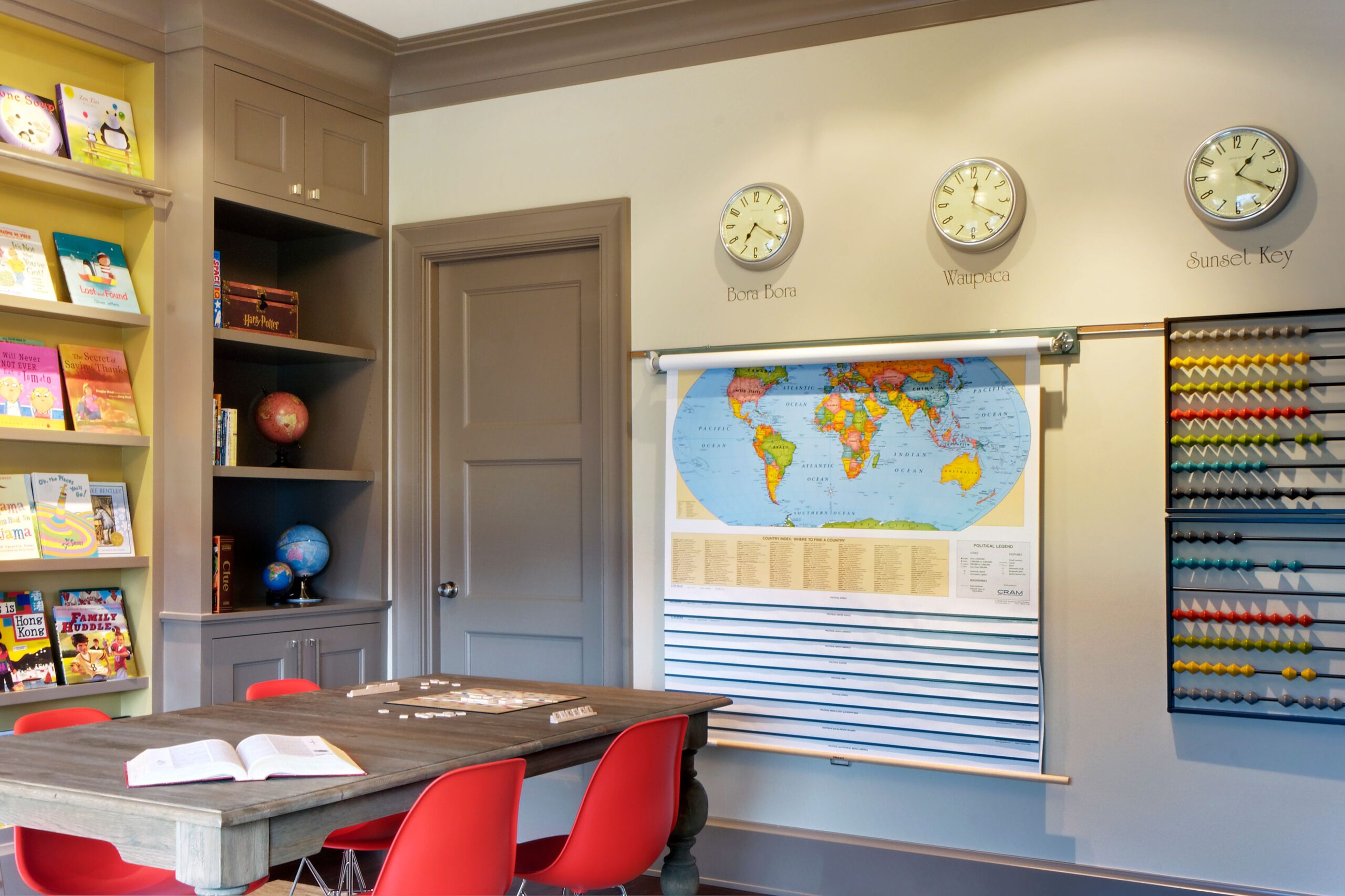
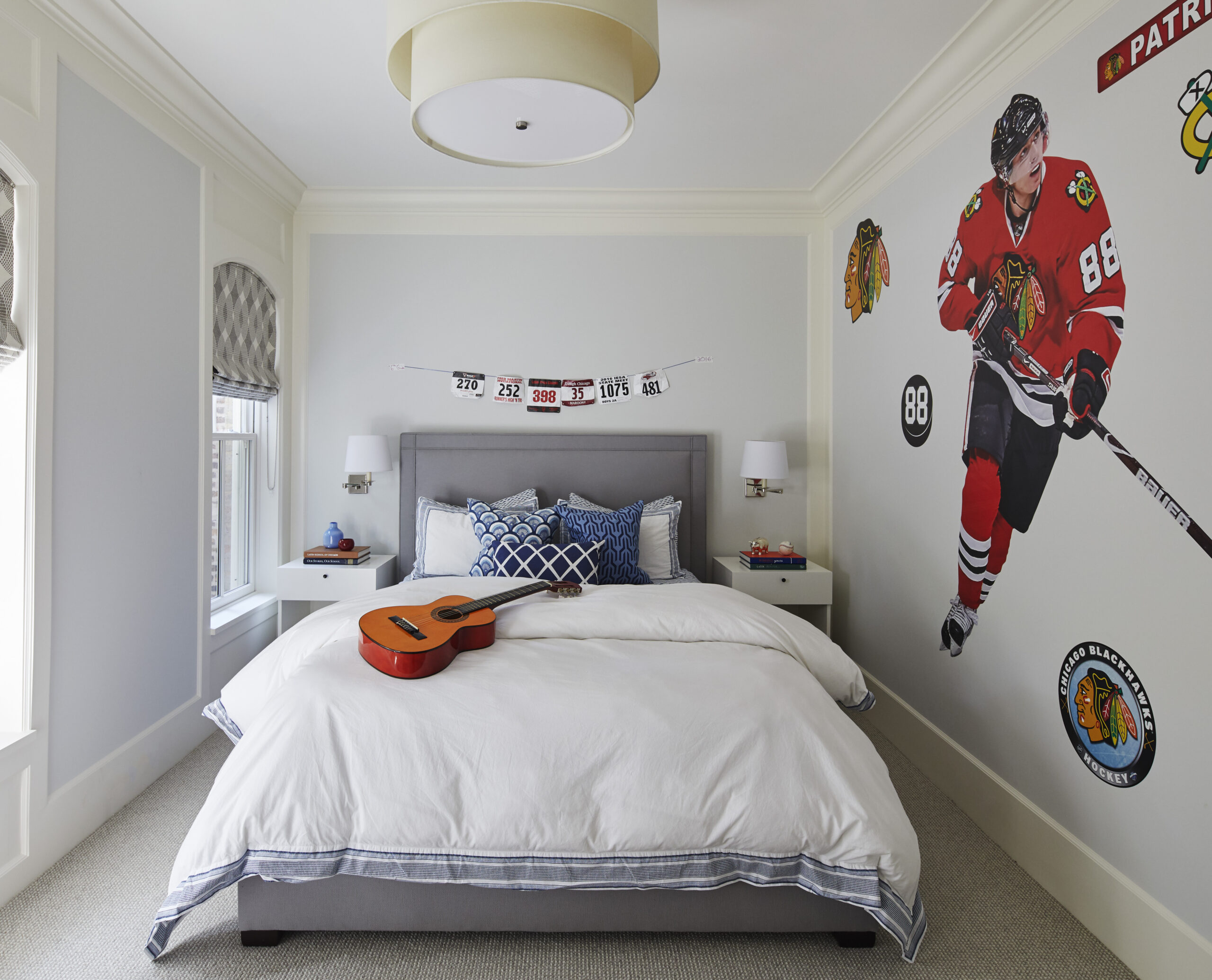
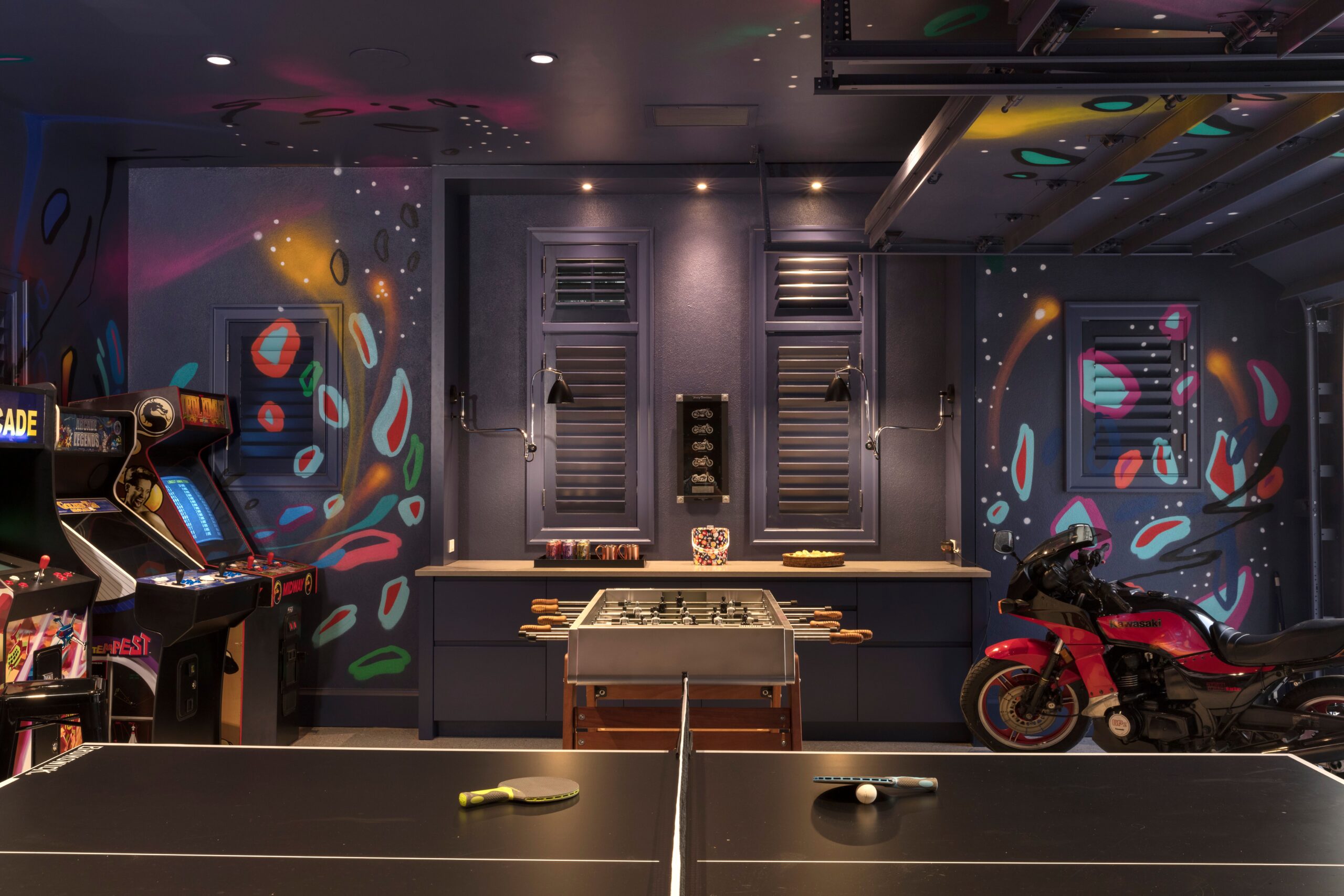
In many bedrooms, we put the power in the child’s hands with LED light strips to give the room a blue or purple glow they can control and change with their moods. One athletic pre-teen boy loathed picking up his dirty clothes from the floor, so we turned his laundry hamper into a basketball hoop and transformed a chore into a game.
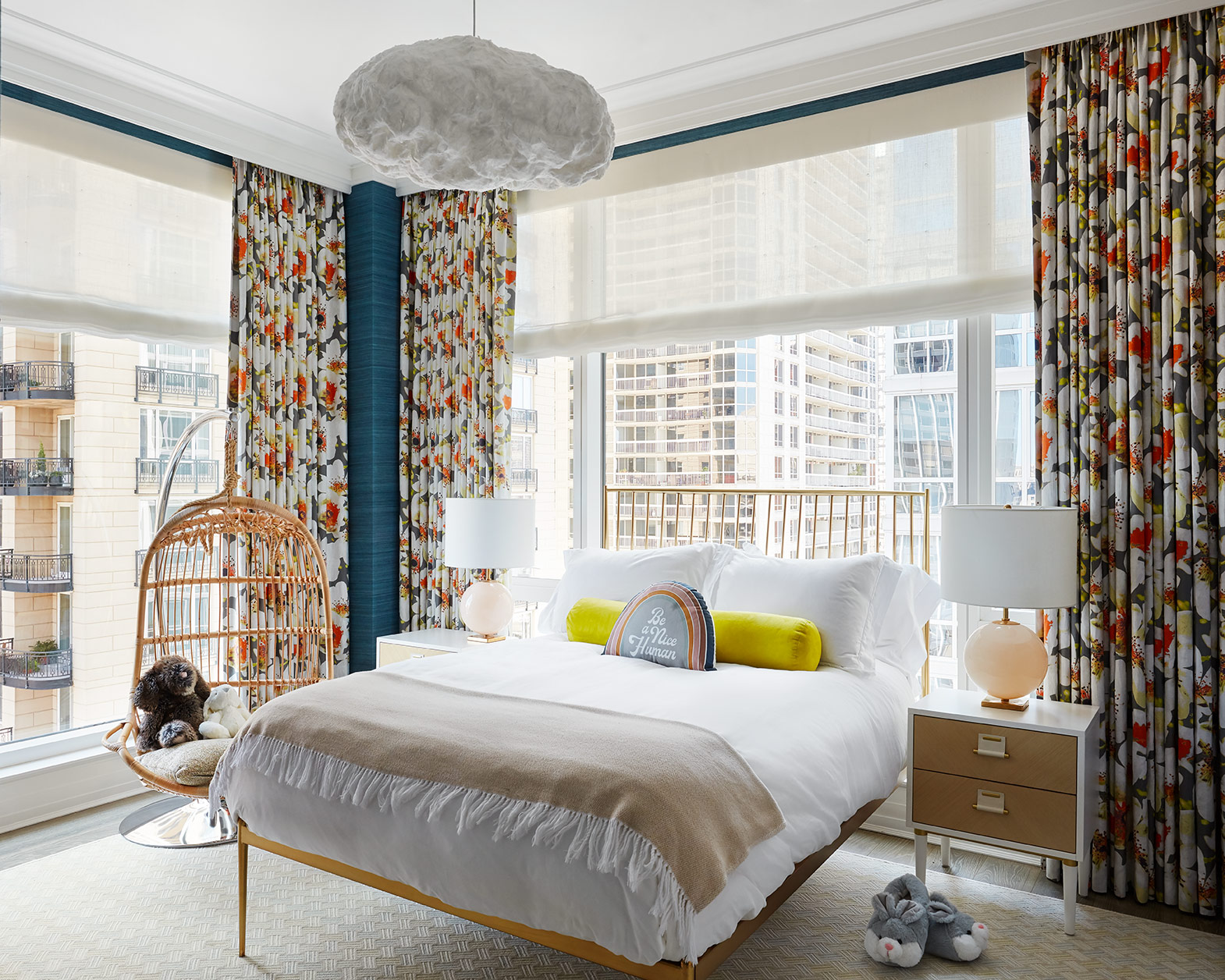
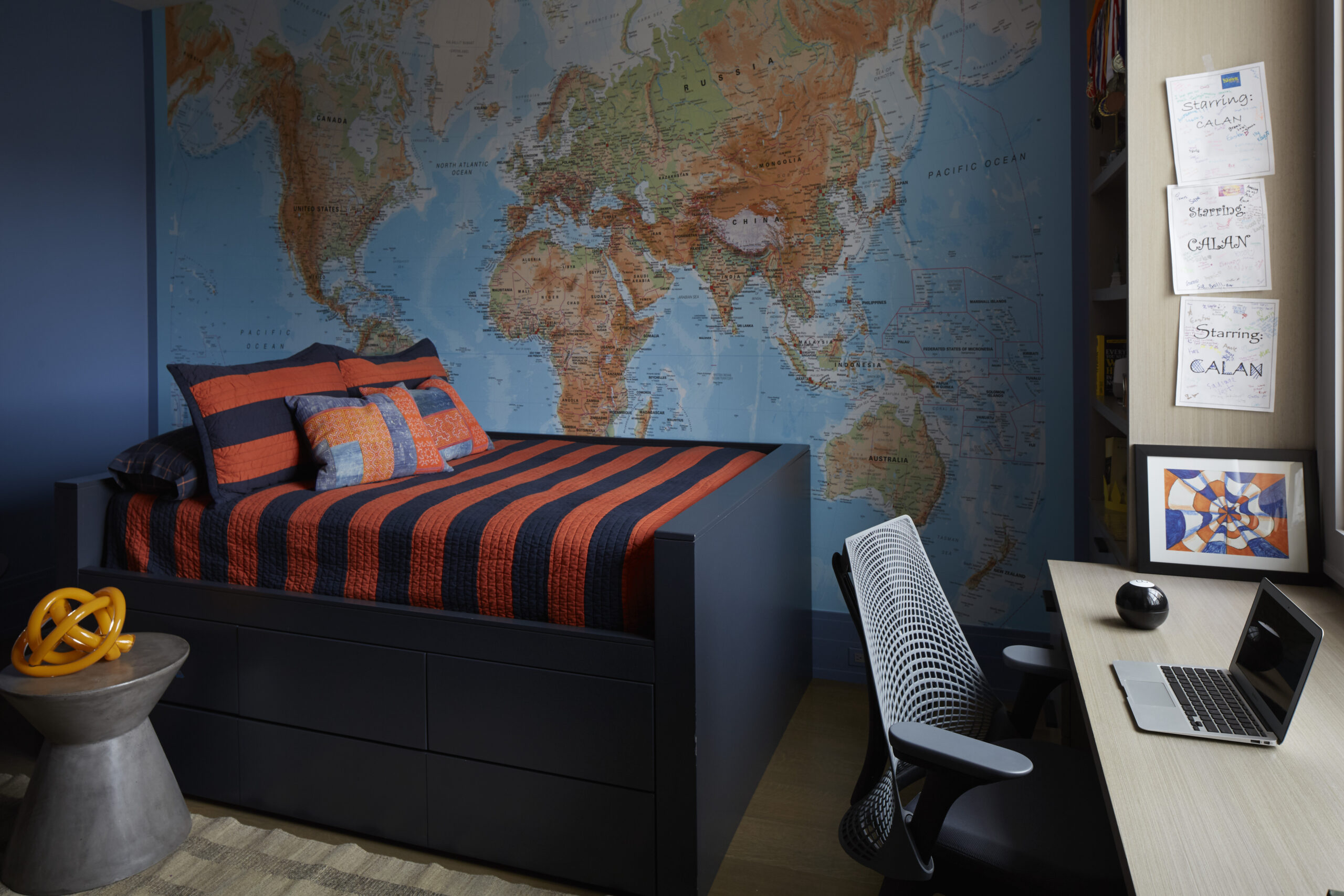
But children grow, of course, and so do their interests. In other words, a girl who’s wild about pink at the age of seven may feel differently when she’s thirteen. “You have to think about a kid’s space as an evolution that’s never done,” says Shea. “Spaces need to move and change.” In order for those spaces grow gracefully, we anchor them with primary pieces such as beds and dressers that are fairly neutral in color, then periodically update less permanent design elements such as wallcoverings and pillows over time. That way, a space that was once dedicated to naps and tea parties can easily evolve into Homework Central and a private haven for Zoom-based classes, and still reflect the person who calls that room their own.
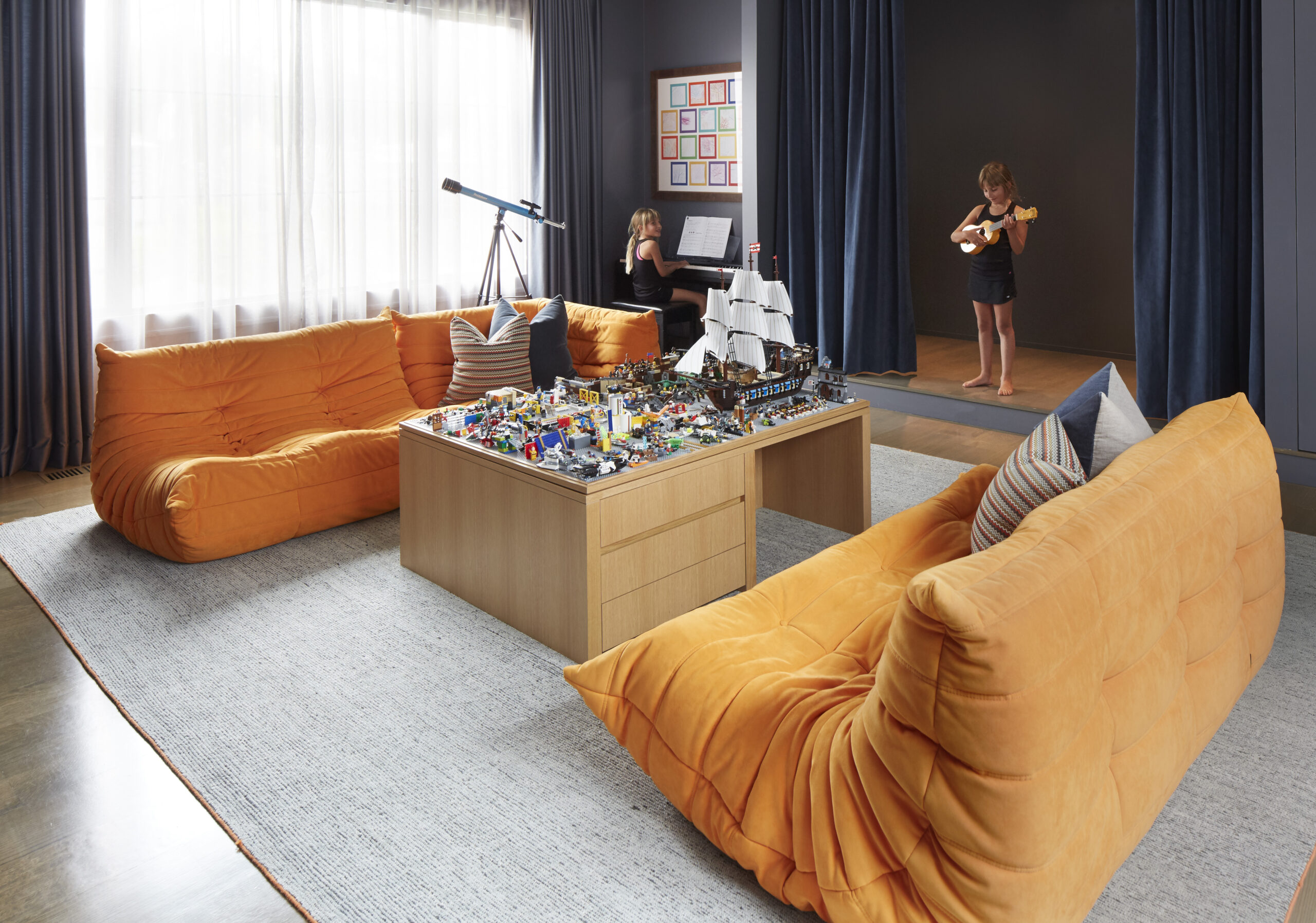
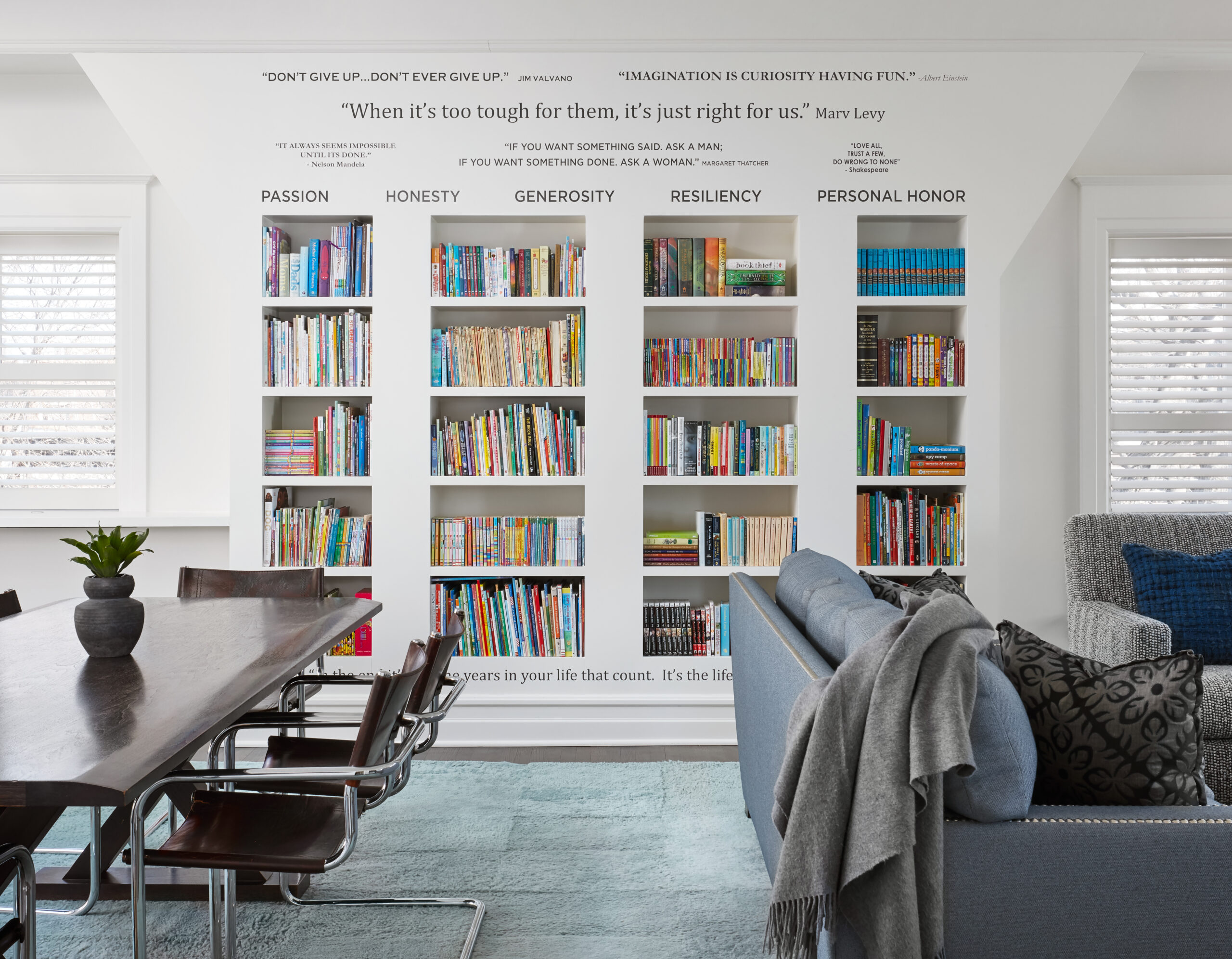
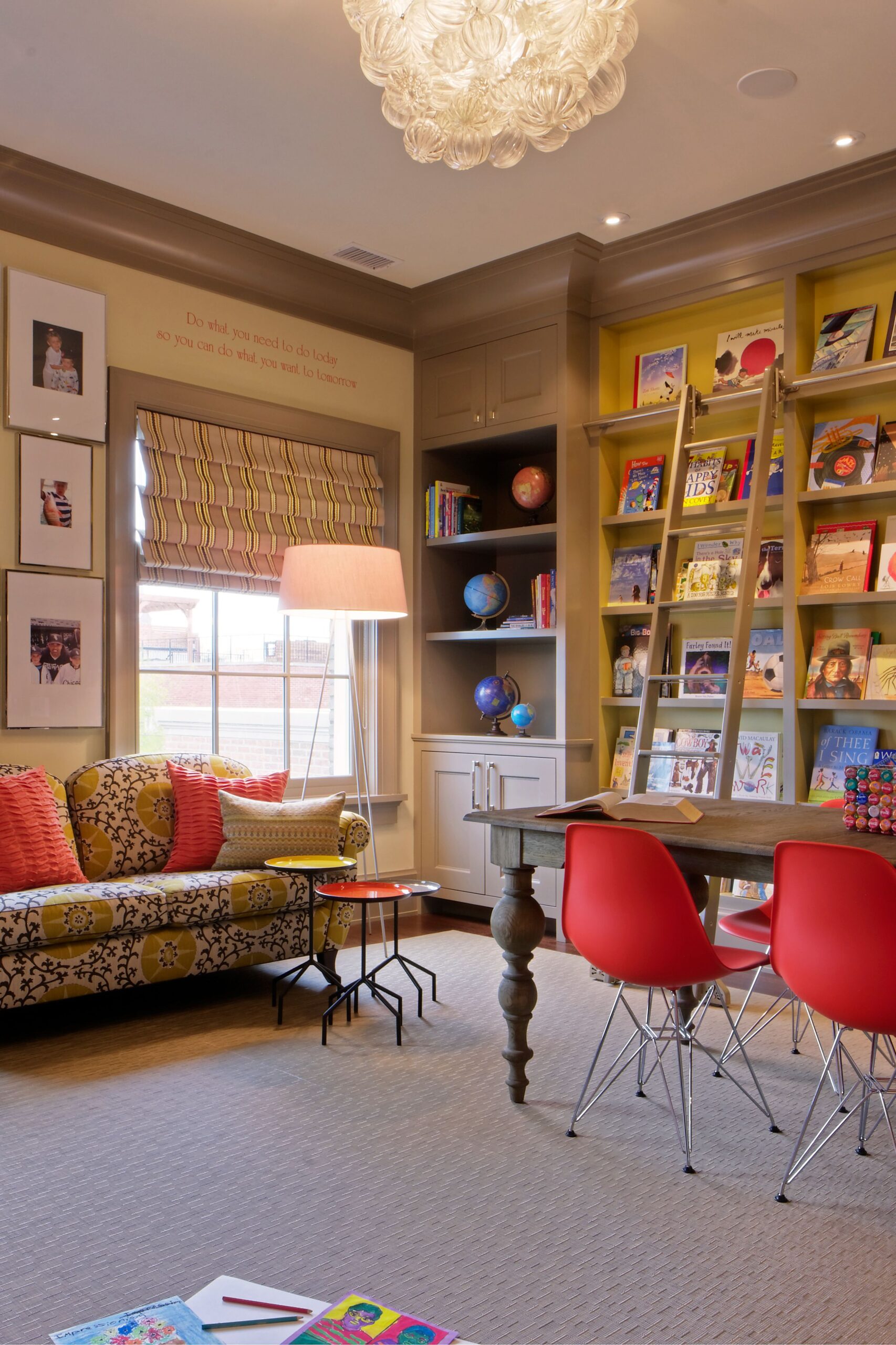
One constant, no matter the age of its occupant, is the type and amount of storage in a child’s room. Because kids continuously add new things to their space (birthday party goodie bag treasures when they’re little; perhaps makeup and a salon’s worth of hair products when they’re older), keeping organized in a constantly changing environment requires flexibility. Open storage displaying books, Legos, or personalized collections may eventually give way to closed bins or shelves. In conversations about a family’s philosophy on putting things away, we’ve found that some clients are uncomfortable with the idea of visual clutter. Others prefer to keep things out in the open in order to express who they are. Each space is approached accordingly, as in a customized gold-and-orange-toned children’s library with inspirational stenciled quotes on the walls, maps and globes, and a rolling ladder attached to the bookshelves of a gracious urban home.
While the spaces are different, the goal is always the same: to create sophisticated, comfortable versions of child-friendly spaces in a way that lets kids be themselves – no matter who they turn out to be, or what they become interested in, as they get older.


